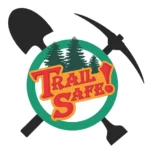Introduction
Sawyers are A.T. volunteers with training and current certification to address blowdowns across the Appalachian Trail.
Holding a current certification to be a Certified A.T. Sawyer requires three active certifications:
- A.T. Saw Certification (renewed every 3 years)
- First Aid (renewed every 2 years)
- Adult CPR (renewed every 2 years)
Becoming a sawyer starts first with being a volunteer with an A.T. maintaining club. Certification and training is most commonly coordinated by ATC, and may be delivered through ATC contracted instructors, agency partner personnel, or partner organizations.

Trail Safe!
Trail Safe! is a unique safety program based on NPS Operational Leadership Training, where the human factor of safety is explored. All A.T. Sawyers should complement their certification with this supplemental training. Trail Safe! training is required for A.T. sawyers operating on non-USFS lands.
Trail Safe! Training
Resources
- USDA Forest Service Saw Operations Guide
- USDA Forest Service: Understanding Complexity – Moving from Theory to Concepts and Tools
- NPS National Chain Saw Policy
- Update to National Chain Saw Program
- 3-Way MOU (ATC, NPS, USFS) for Saw Safety
- ATC Chain-saw and Crosscut Saw Training and Certification Policy
- NPS/USFS Memorandum of Agreement on Saw Reciprocity for National Trails
- USFS Certification Extension 2021-2022
- USFS Certification Extension 2020-2021
General Resources
- Personal Protective Equipment (PPE) Required for Saw Operations
- Inspection, care and retirement indicators for chain saw chaps
- Recommended First Aid Kit Supply List
- Alert: Chain Saw Strikes to Swampers
- Alert: Chainsaw Kickback to Foot
- Safety Bulletin: Saw Operations and Fatigue
- 2020 Advisory on Types of Chainsaws
Job Hazard Analysis
- Curriculum from previous USDA Forest Service training course: MTDC Chain Saw and Crosscut Saw Training Course Student Handbook
- Five Step Cutting Plan (OHLEC)
- OHLEC Field Guide
- A.T. Sawyer Resource: Saw Time Log
- “The Crosscut Sawyer” Introductory Training Online with the Arthur Carhart National Wilderness Training Center
- USFS Saw Operations Guide
- USFS Saw Program FAQ 2022
- USFS National Crosscut and Chainsaw Program
- USFS Saws that Sing: A guide to using crosscut saws
- One Moving Part: The Forest Service Ax Manual
Frequently Asked Questions
Individuals must be involved with an A.T. club or ATC as an active A.T. volunteer with field work experience. Participation in a course signifies both a willingness to commit to addressing blowdowns on a club’s section or side-trails as assigned.
If you aren’t a volunteer, review this question below on what to do to move toward becoming a certified A.T. sawyer.
Training is offered free to A.T. volunteers, and space is often limited. Course applicants who are confirmed on a workshop are expected to attend, or give adequate advanced notice (> 2 weeks) for a cancellation so that another volunteer may take the spot.
If you are an A.T. volunteer facing an expiration of your certification, you may apply for courses in geography outside of where you would traditionally receive training, and we’ll do our best to accommodate you on course. Reach out to your ATC Regional Manager to learn about upcoming opportunities.
We invest in volunteers who invest in the A.T. Here’s how to get started toward your goal of becoming an A.T. certified sawyer.
- Work with an A.T. club near you as a volunteer, as part of work-trips.
- Find and take part in volunteer opportunities as a “swamper” for saw operation projects where you get to observe from a safe distance, and help pull cut material from the work area.
- Get to know field leaders who can recommend or approve you for an upcoming course.
- Be prepared to commit dedicated time to applying your saw skills to the Trail after your training.
Volunteers submit a saw course application to express interest in an upcoming course.
The roster is reviewed by ATC regional staff and local club saw coordinators to select candidates for available spots.
Confirmation or waitlist notification is issued to applicants.
Courses may range from 12 hours to 24 hours in length, depending on the instructor. Courses include both classroom and field instruction and hands-on opportunities to use a saw. Depending on the needs of the attendees and the instructors’ availability, courses may be held on a weekend or during the week and may combine day and night sessions.
The course covers the following topics:
- A job-hazard analysis to identify the hazards associated with the task, abatement actions that can eliminate or reduce hazards, and first-aid supplies and emergency evacuation procedures
- A discussion of personal protective equipment (PPE) required for saw operation
- Situational awareness
- A hands-on demonstration of chain-saw or crosscut saw use and maintenance
- A discussion of common chain-saw or crosscut saw tasks and techniques, including bucking, limbing, and felling.
- Hands-on opportunities to practice the above techniques
The course instructor determines certification levels based upon observing a student’s proficiency with the saw during the field portion of the course. It is possible that a student may complete the course without receiving certification. Refer to the National Saw Policies in the above section to learn more about certification levels, and associated skills and knowledge.
A one-day recertification option for existing certified sawyers may be available.
The certification must be from a nationally accredited organization, such as the American Red Cross, American Heart Association, or Stonehearth Open Learning Opportunities (SOLO). There are currently no online-only courses that meet the requirements for the sawyer program; however, some hybrid courses are allowed where learning takes place online and practical application occurs in classroom.
Volunteers are encouraged, when possible, to take Wilderness First Aid training because of the remote nature of most A.T. field work.
Certified A.T. Sawyers may make requests using the following forms:
- A.T. Sawyer PPE Request Form
- First Aid-CPR Reimbursement Request Form
Requires copies or scans of proof of payment and certification through the provider.
